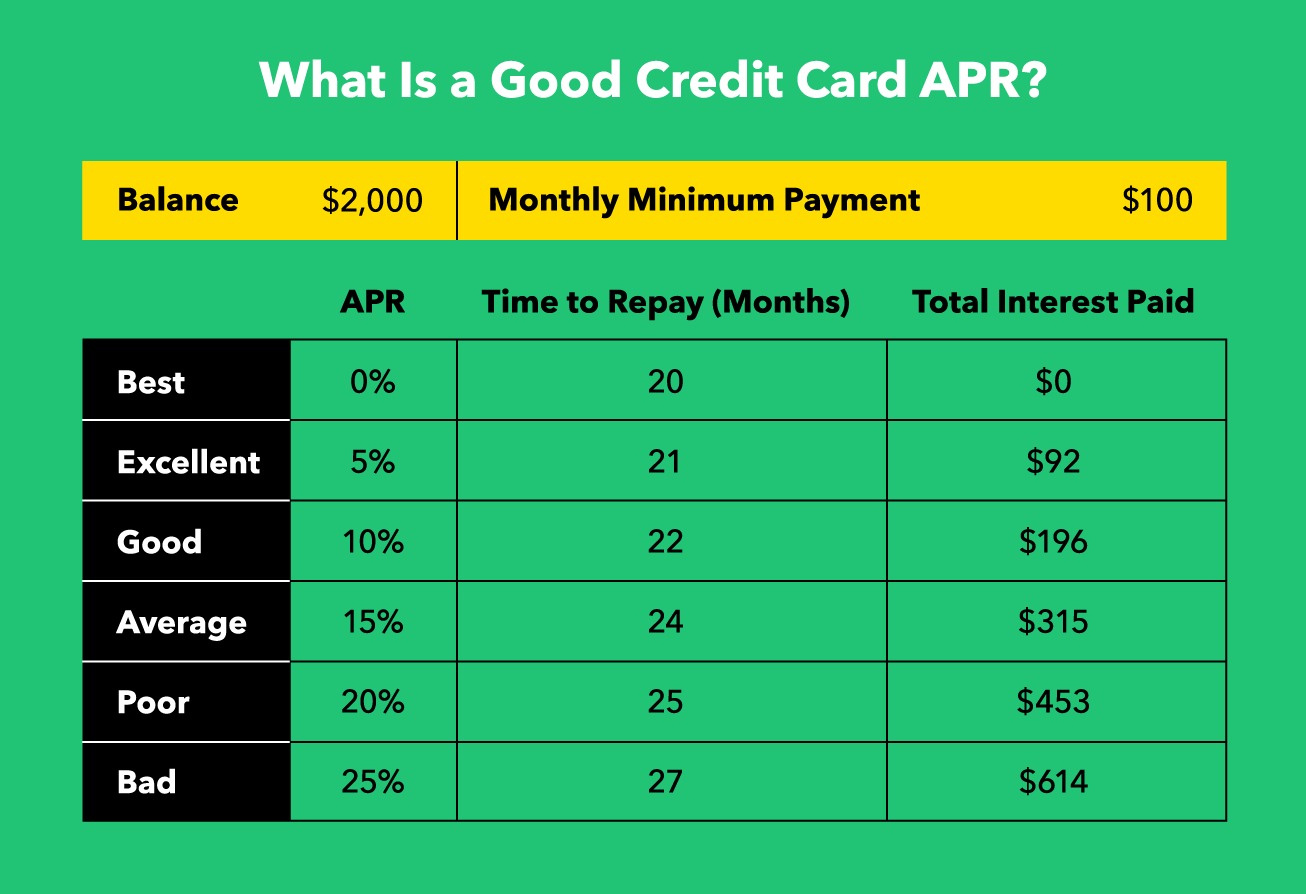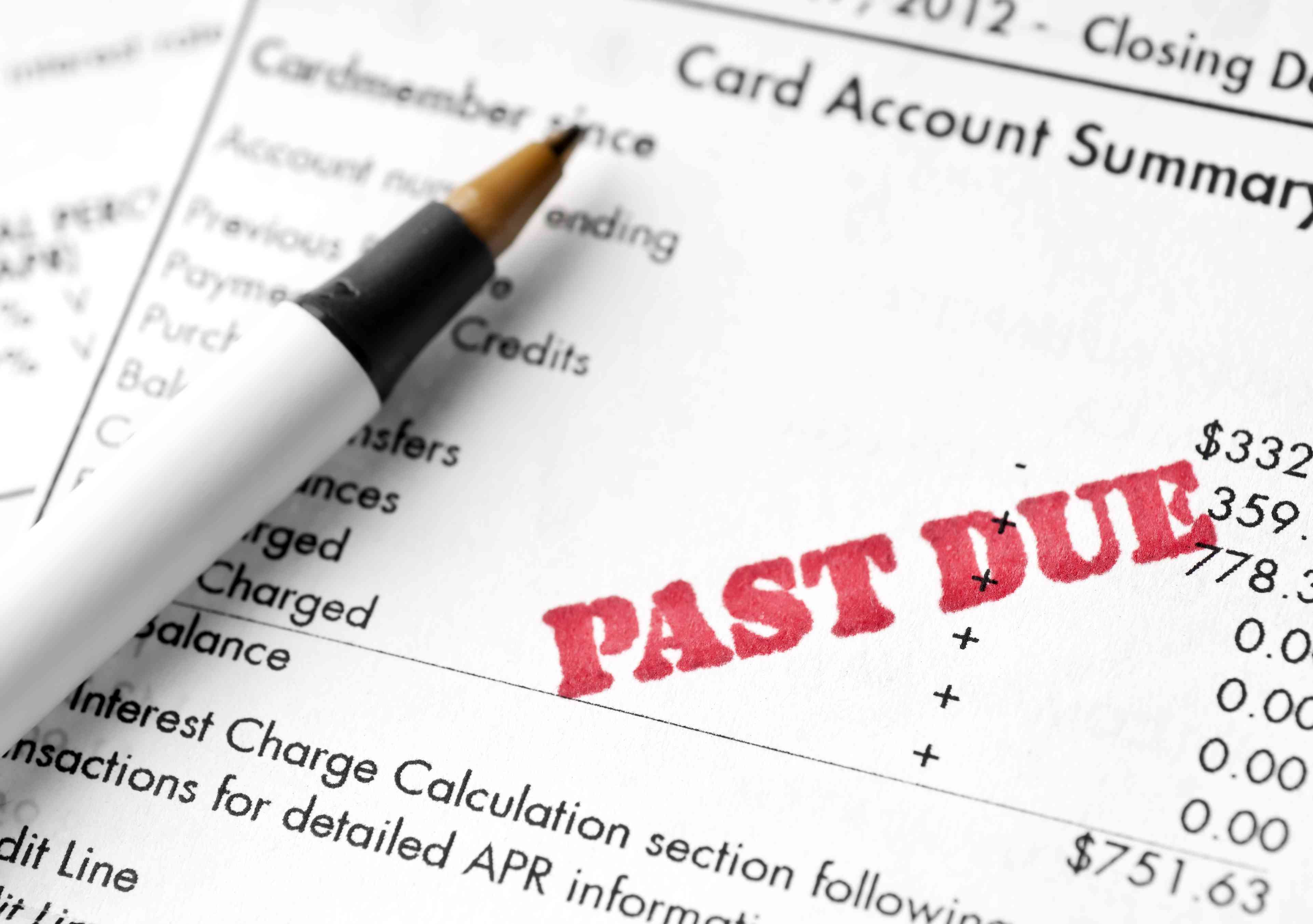Home>Finance>Explain When This Credit Card Company Can Adjust The APR


Finance
Explain When This Credit Card Company Can Adjust The APR
Published: March 3, 2024
Learn about the factors that can lead to an adjustment in APR with this comprehensive guide from a leading credit card company. Understand the impact on your finances.
(Many of the links in this article redirect to a specific reviewed product. Your purchase of these products through affiliate links helps to generate commission for LiveWell, at no extra cost. Learn more)
Table of Contents
Introduction
Credit cards have become an integral part of modern financial systems, offering convenience and flexibility in managing personal finances. One crucial aspect of credit card usage is the annual percentage rate (APR), which determines the cost of borrowing on the card. Understanding when a credit card company can adjust the APR is essential for cardholders to make informed financial decisions and effectively manage their credit card accounts.
The APR is a significant factor that influences the overall cost of maintaining a credit card balance. It is crucial for cardholders to comprehend the circumstances under which credit card companies can adjust the APR, as this knowledge empowers individuals to navigate the complexities of credit card terms and conditions. By gaining insight into the factors and situations that may lead to APR adjustments, cardholders can proactively monitor their credit card accounts and take appropriate measures to mitigate potential financial impacts.
In this comprehensive guide, we will delve into the factors affecting APR adjustments, the circumstances under which credit card companies can adjust the APR, and the notification process for cardholders. By shedding light on these critical aspects, this article aims to equip readers with the knowledge necessary to navigate the nuances of APR adjustments, thereby enabling them to make informed financial decisions and effectively manage their credit card accounts.
Factors Affecting APR Adjustment
Several factors can influence the adjustment of the annual percentage rate (APR) on a credit card. Understanding these factors is crucial for cardholders, as it allows them to anticipate potential changes in their APR and take proactive measures to manage their credit card accounts effectively. The following are key factors that may contribute to APR adjustments:
- Market Conditions: The prevailing economic landscape and market conditions can significantly impact APR adjustments. Credit card companies may adjust APRs in response to changes in the broader economic environment, such as fluctuations in interest rates set by central banks or shifts in consumer spending patterns. These market conditions can influence the cost of funds for credit card issuers, prompting them to review and potentially adjust the APR for cardholders.
- Cardholder’s Creditworthiness: Individual cardholder credit profiles play a pivotal role in APR adjustments. Credit card companies regularly assess the creditworthiness of their cardholders based on factors such as credit scores, payment history, and overall financial stability. Changes in a cardholder’s credit profile, such as a decrease in credit score or a history of missed payments, may prompt the credit card company to adjust the APR to reflect the perceived increase in lending risk.
- Regulatory Changes: Shifts in regulatory frameworks and financial legislation can also impact APR adjustments. Changes in laws governing the credit card industry, such as amendments to usury laws or alterations in consumer protection regulations, may influence the parameters within which credit card companies can adjust APRs. Compliance with evolving regulatory requirements can lead credit card issuers to review and adjust APRs accordingly.
- Cardholder Agreement Terms: The terms outlined in the cardholder agreement, including provisions related to variable APRs, provide the framework for potential APR adjustments. Cardholder agreements typically specify the conditions under which the credit card company can adjust the APR, offering transparency to cardholders regarding the circumstances that may trigger such adjustments. Understanding the terms of the cardholder agreement is essential for cardholders to grasp the potential scenarios that could lead to APR changes.
By considering these factors, cardholders can gain valuable insights into the dynamics that underpin APR adjustments, enabling them to stay informed and prepared for potential changes in their credit card APRs.
Circumstances Allowing APR Adjustment
Understanding the specific circumstances under which a credit card company can adjust the annual percentage rate (APR) is crucial for cardholders to navigate the complexities of credit card management. While the factors affecting APR adjustments provide a broad overview, it is essential to delve into the specific scenarios that may trigger APR adjustments. The following are key circumstances that may allow credit card companies to adjust the APR:
- Introductory Rate Expiration: Many credit cards offer introductory or promotional APRs for a specified period, often as an incentive for new cardholders. Once the introductory period concludes, the APR may be subject to adjustment based on the terms outlined in the cardholder agreement. Cardholders should be aware of the expiration of introductory rates and the potential APR adjustments that may follow.
- Payment Default: Failure to make timely payments or defaulting on credit card obligations can trigger APR adjustments. Credit card companies may increase the APR for cardholders who exhibit patterns of delinquency or default, reflecting the increased lending risk associated with such behavior.
- Variable Rate Provision: Many credit card agreements include provisions for variable APRs, which are tied to benchmark interest rates or other financial indicators. Changes in these underlying factors, such as shifts in the prime rate, can lead to corresponding adjustments in the cardholder’s APR as outlined in the agreement.
- Reassessment of Credit Risk: Credit card companies periodically reassess the credit risk associated with individual cardholders based on updated credit information and payment behavior. If a cardholder’s credit risk profile undergoes changes, such as a decrease in credit score or an increase in debt-to-income ratio, the credit card company may adjust the APR to align with the reassessed risk level.
- Regulatory Changes: Evolving regulatory requirements or changes in financial legislation can create circumstances necessitating APR adjustments. Compliance with new regulatory mandates or adjustments to adhere to legal constraints may prompt credit card companies to review and modify APRs within the parameters permitted by the updated regulatory framework.
By being cognizant of these circumstances, cardholders can proactively monitor their credit card accounts and take preemptive measures to mitigate potential APR adjustments, thereby maintaining control over their financial obligations and overall credit card management.
Notification of APR Adjustment
When a credit card company decides to adjust the annual percentage rate (APR) on a cardholder’s account, it is imperative for the company to adhere to notification requirements to ensure transparency and enable cardholders to understand and prepare for the impending changes. The notification process for APR adjustments is designed to provide cardholders with essential information regarding the upcoming modifications to their APR. The following key aspects characterize the notification of APR adjustments:
- Advance Notice: In compliance with regulatory guidelines, credit card companies are typically required to provide advance notice of APR adjustments to cardholders. This advance notice period allows cardholders to anticipate the changes and make informed decisions regarding their credit card usage and financial planning. The specific duration of the advance notice period may be governed by applicable regulations and the terms outlined in the cardholder agreement.
- Clear Communication: The notification of APR adjustments should entail clear and comprehensible communication to ensure that cardholders fully grasp the impending changes. Credit card companies are expected to articulate the reasons for the APR adjustment, the effective date of the change, and any relevant details pertaining to the new APR structure. Clear communication facilitates transparency and empowers cardholders to assess the impact of the adjustment on their financial obligations.
- Delivery Methods: Credit card companies employ various delivery methods to notify cardholders of APR adjustments, including electronic communications, such as email or secure online account notifications, as well as physical mail correspondence. The chosen delivery method should align with regulatory requirements and the preferences indicated by cardholders in their communication settings.
- Access to Information: Cardholders should have access to comprehensive information regarding the adjusted APR, enabling them to review the terms and conditions associated with the new rate. This access to information empowers cardholders to seek clarification, if needed, and make informed decisions based on a thorough understanding of the APR adjustments.
By adhering to the principles of advance notice, clear communication, appropriate delivery methods, and access to information, credit card companies facilitate a transparent and informed notification process for APR adjustments. This approach empowers cardholders to stay informed about changes to their APR and take proactive steps to manage their credit card accounts effectively.
Conclusion
Understanding the circumstances under which a credit card company can adjust the annual percentage rate (APR) is essential for cardholders to navigate the intricacies of credit card management effectively. By comprehending the factors influencing APR adjustments, the specific circumstances allowing for such adjustments, and the notification process associated with APR modifications, cardholders can proactively monitor their credit card accounts and make informed financial decisions.
Factors such as market conditions, cardholder creditworthiness, regulatory changes, and cardholder agreement terms contribute to the dynamics of APR adjustments. These factors underscore the importance of staying informed about the broader economic landscape, maintaining a favorable credit profile, and understanding the legal and contractual frameworks governing credit card agreements.
Furthermore, being aware of the circumstances allowing APR adjustments, including the expiration of introductory rates, payment default, variable rate provisions, reassessment of credit risk, and regulatory changes, empowers cardholders to anticipate potential APR changes and take preemptive measures to manage their credit card accounts responsibly.
The notification of APR adjustments plays a crucial role in fostering transparency and enabling cardholders to comprehend and prepare for impending changes. Through advance notice, clear communication, appropriate delivery methods, and access to comprehensive information, credit card companies facilitate a transparent notification process, empowering cardholders to assess the impact of APR adjustments and make informed decisions regarding their credit card usage and financial planning.
In conclusion, by gaining a comprehensive understanding of the factors, circumstances, and notification processes related to APR adjustments, cardholders can proactively navigate the complexities of credit card management, maintain control over their financial obligations, and make informed decisions to optimize their credit card usage.














